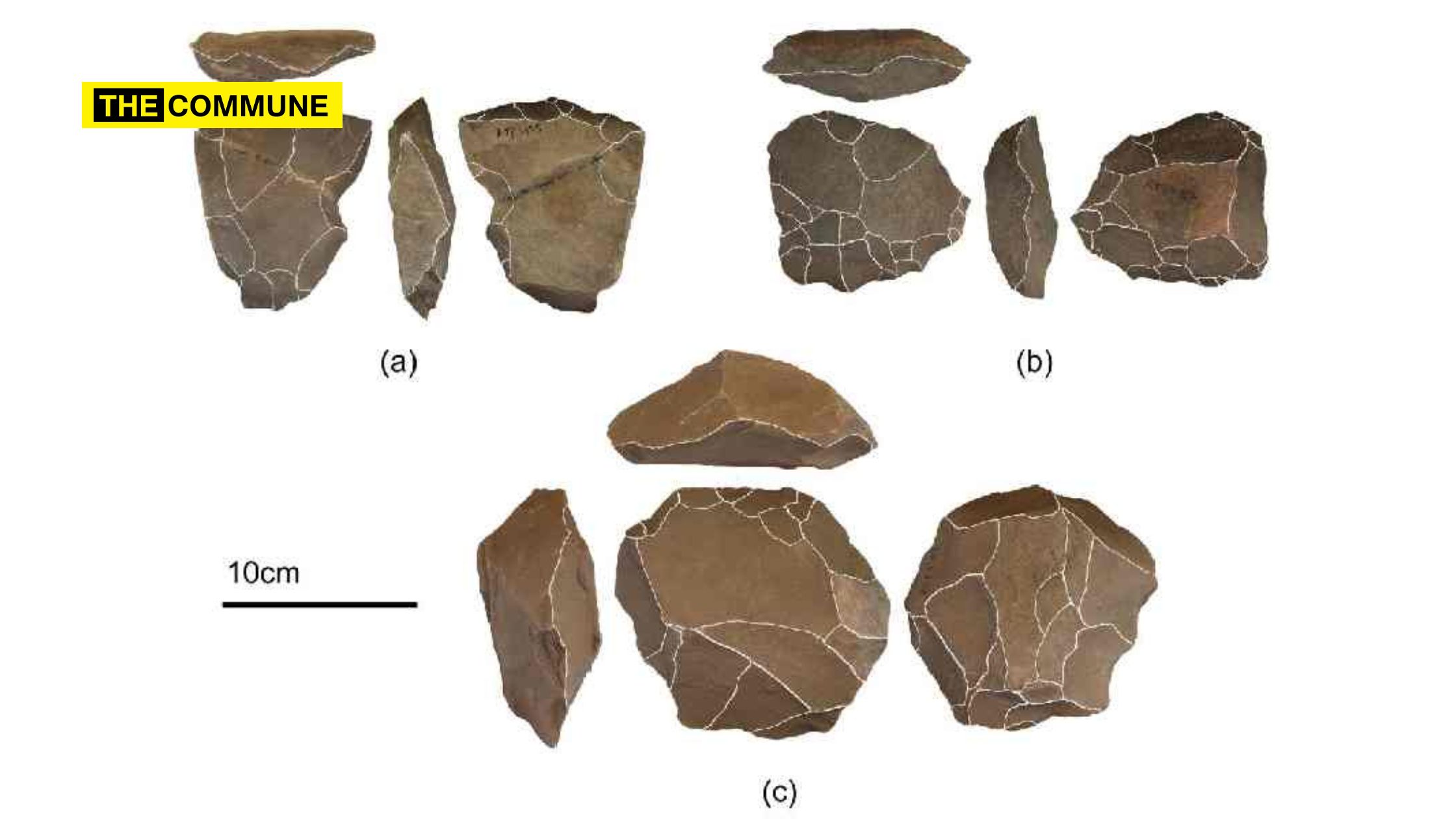
Image Source: Telegraph India
In a groundbreaking discovery, archaeologists in Andhra Pradesh have unearthed stone tools dating back 139,000 years, challenging the long-held belief that only modern humans could craft such sophisticated implements. This remarkable find, near the village of Retlapalle in Prakasam district, adds a new layer of mystery regarding the identity of these ancient toolmakers.
The excavation, led by Anil Devara, an assistant professor of archaeology at the Maharaja Sayajirao University in Baroda, uncovered what are believed to be Middle Paleolithic stone tools. Devara and his team suggest that these tools could indicate that some extinct human ancestors were also skilled in stone-making, a trait previously attributed solely to Homo sapiens.
The collection, consisting of several hundred stones shaped into oval, triangular, or pointed tools for use as blades, cutters, or scrapers, predates the migration of modern humans from Africa to South Asia. “The identity of the toolmakers in Retlapalle remains a mystery,“ Devara commented, underscoring the puzzle surrounding these ancient artisans.
🚨 Huge discovery in Andhra Pradesh!
139,000-year-old stone tools found in Prakasam district suggest extinct human species were crafting advanced tools long before Homo sapiens arrived.
This could rewrite our ancient history in South Asia!🌏✨#Archaeology #StoneAge pic.twitter.com/JKSZFs3y3w
— Andhra Nexus (@AndhraNexus) September 3, 2024
This discovery echoes earlier findings nearly twenty years ago at Attirampakkam, a prehistoric site about 60 km west of Chennai. There, similar stone tools, estimated to be between 372,000 and 170,000 years old, were discovered. Genetic evidence from over 25 years ago indicates that today’s global population descends from modern humans who migrated out of Africa between 60,000 and 70,000 years ago. However, an independent archaeological study conducted a decade ago at Jwalapuram in Andhra Pradesh uncovered stone tools dating back 77,000 years. This suggests that Homo sapiens may have been present in India as far back as 125,000 years ago.
Older stone tools have also been found across India. Prehistorians Shanti Pappu and Kumar Akhilesh at the Sharma Centre for Heritage Education have discovered tools at Attirampakkam that are approximately 1.5 million years old. Similarly, a site in Karnataka has produced tools dating back around 1.2 million years. These older tools are classified as “Acheulian” and were made by the extinct ancestral species Homo erectus, which roamed Africa and Asia between 1.6 million years ago and at least 250,000 years ago.
“Acheulian tools, such as hand axes or cleavers, are much larger and older compared to the Middle Paleolithic tools, which appeared much later,” Devara explained. He noted that the Middle Paleolithic tools show signs of deliberate planning and shaping, a trait previously believed to have developed exclusively in Homo sapiens.
However, the Middle Paleolithic tools found at Retlapalle and Attirampakkam in India, along with similar discoveries in Europe, have cast significant doubt on the assumption that such tools only appeared after the arrival of modern humans. Shanti Pappu, who has spent two decades studying the Attirampakkam site but was not involved in the Retlapalle findings, pointed out that the lack of fossilized remains of ancestral human species at these South Asian sites presents a significant challenge. “Without bones, we can’t link these tools, whether from Attirampakkam or Retlapalle to any specific species,“ she said, emphasizing that the question of who made these tools remains unanswered.
Devara highlighted that increasing evidence suggests similar Middle Paleolithic tools appeared around the same time in Africa, Europe, and South Asia before modern humans had reached Europe or Asia. “This suggests that the same tool-making technology may have evolved independently in different species—possibly among modern humans in Africa, Neanderthals in Europe, and perhaps other archaic human species in South Asia,“ he added.
The oldest ancient human fossil from India, a skull found on the banks of the River Narmada in 1982, dates between 150,000 and 200,000 years ago. Scientists attribute the scarcity of archaic human remains in South Asia to factors such as the region’s humid climate, frequent rains, soil composition, and limited funding for fossil excavation.
This discovery has reignited the debate over the origins of toolmaking in human evolution and raises new questions about the capabilities and identities of ancient human ancestors in South Asia.
(With inputs from Organiser)
Subscribe to our Telegram, WhatsApp, and Instagram channels and get the best stories of the day delivered instantly.




